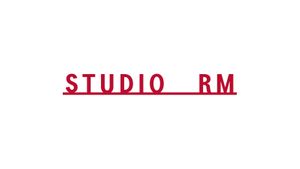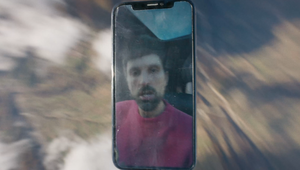
Making the Grade: Jamie Noble

Jamie Noble is a senior colourist who has worked at Studio RM’s London office for almost a decade.
Known for his impeccable attention to detail and strong artistic eye, Jamie is one of the most sought-after colourists specialising in fashion, beauty and luxury. He has an innate understanding of aspirational brands and their needs, working with the likes of Gucci, Marc Jacobs, Saint Laurent and Calvin Klein.
From Quentin Jones and Daniel Sandwald to Alasdair McLellan and Harley Weir, Jamie has worked with new and established artists to help realise work that defines the look of contemporary culture.
What was your first experience with the world of colour grading – and when did you decide that being a colourist was a role that you wanted to pursue?
My first experience of motion colour grading was while I worked at a company who invested in a Baselight grading suite. At the time I was a creative retoucher, but watching the colourist work definitely piqued a big interest because I decided then it was something I wanted to do. It took about five years from that point to become a fully fledged colourist.
What was the project that you felt really changed your career?
There are quite a few projects, but thinking back, the most important was my first feature-length grade, Piano to Zanskar (2018) , which came quite early in my career as a colourist. It changed everything for me because it taught me new grading techniques for long form content, and new processes in taking the project from the suite to the big screen.
How/where did you hone your craft and did you have any particular mentors?
I learnt on the job. I didn’t have a conventional route to becoming a colourist — I was my own colour assistant, so to speak. At the beginning, I was trying to gain as much experience and knowledge from the freelance colourists who came to work in the suite, so I suppose you could call them my mentors.
Tell us more about your creative process.
I will start any project by looking at the edit offline files to get a feel for the job.
If the grade is attended, then the grade is a collaborative process between the director, DOP and myself. First, it will be a conversation to get an idea of the look they are trying to achieve, sometimes I get some colour reference images. I will work up a few options and we go on from there.
If the grade is non-attended, normally I‘ll be sent colour references to work towards, as well as talking to the director and / or DOP, if needed.
From experience, we’ve found that colourists often love art and photography - when you’re out of the studio, what inspires you?
I get my main inspiration from going to art and photographic exhibitions and going to the cinema. But I believe you can get inspiration from pretty much anything, really!
Colour grading is largely a digital affair, but there’s also been a resurgence of film over the past few years in commercials and music videos. What are your thoughts about working on film versus digital formats like 4K? And what are your favourite techniques for capturing a vintage or tactile feel?
I think both have their place in the industry; when the grade is done well, both can look very beautiful.
At Studio RM, we have a lot of clients who shoot only with film — Alexandra Leese is one of them — and there is something about the natural feel of film that I really like. Her film i-D x Gucci in Bloom that I colour graded a while back has a lovely organic quality about it.
As for techniques, I do what I think the job needs to get the desired result, rather than have a set way of doing it. I would say, first you get the exposure, colour balancing and anything else in the clip, such as skin tones correct. Then it is about having the years experience of different film stocks to know how to apply the look to achieve the right end result.
When working in commercials, what role can colour and a grade play in enhancing a brand’s assets and what sort of conversations do you have with creatives and clients about that?
At Studio RM, we work a lot with fashion and luxury brands, so the desire to be aspirational while staying true to the brand’s DNA is what’s usually most important to them. They will usually have a very specific feeling in mind that they want to express, so of course, the colour and grade is crucial to that. It’s those small nuances — everything from how the model’s skin looks to making sure the clothing looks elevated — that need to be considered to communicate just the right tone for the brand.
How do you ensure that each colourist-director partnership is a success?
I believe any successful colourist-director relationship is built on trust. You need directors to trust that the colourist will take care of their work and they know it in good hands.
Studio RM is renowned for developing relationships based on trust with their artists. I’ve been working with Alasdair McLellan for the last five years. We work together very closely, and I know his process and artistic nuances inside-out. So when he went from directing his fashion films to music videos for The XX, the process was still super smooth despite the different context. It makes the job so much easier for everyone when you build up a good relationship with the artist.
My Highlights with Alasdair McLellan
The XX, I Dare you, Promo
Gucci X ID In Bloom by Alexandra Leese
Marc Jacobs, Daisy Fragrance Campaign
What advice would you give to budding colourist?
The same thing I was told many years ago: keep working hard and keep learning.
In your opinion, what’s the difference between a good grade and a great grade?
Colour can affect us emotionally, psychologically and sometimes physically, more often than not without us becoming aware of it. That is my definition of a great grade.
How is the craft and trade of colour grading changing?
I would say the trade is becoming more and more accessible now, especially with the free version of DaVinci Resolve.












